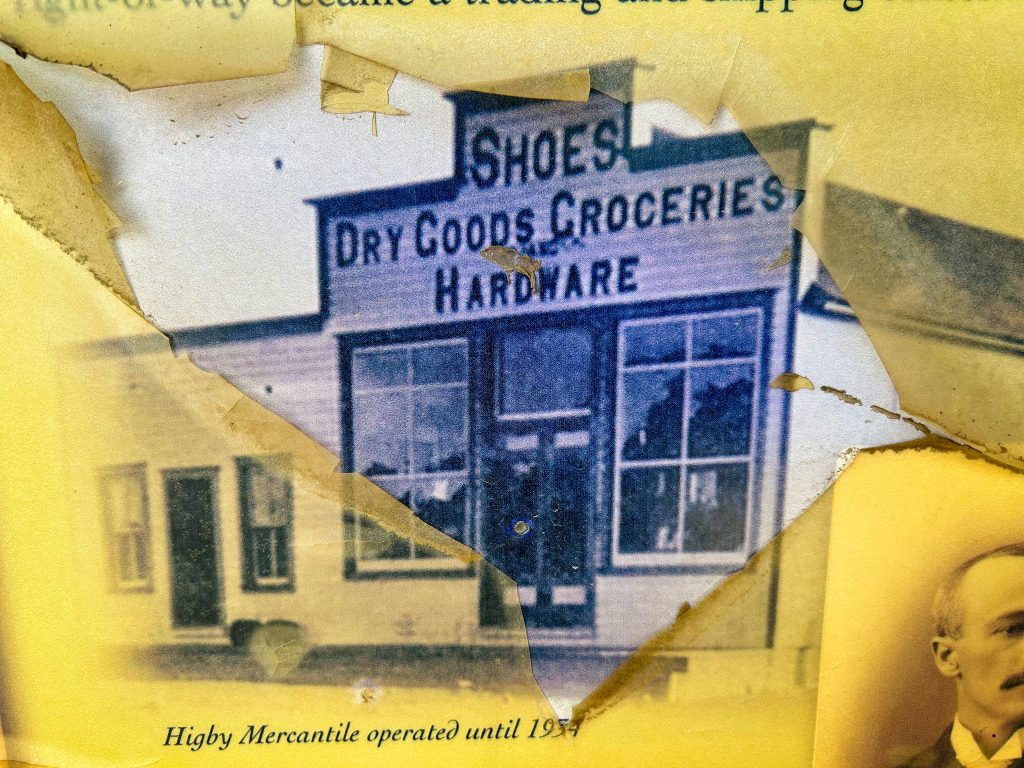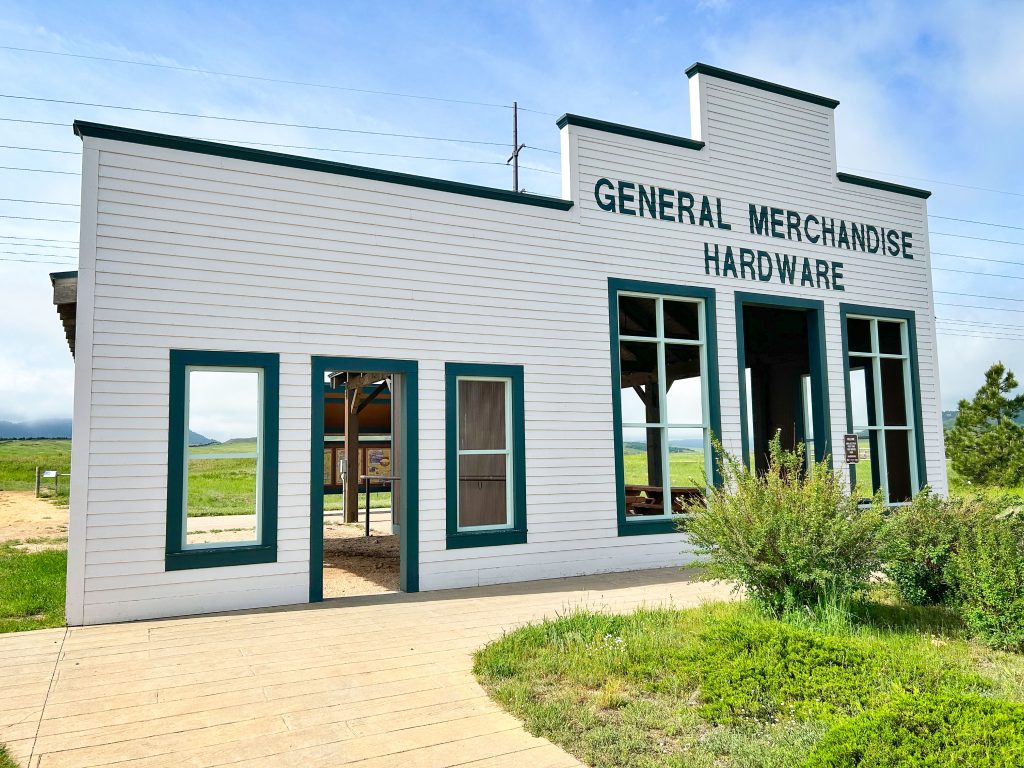The Higbys: A Greenland tapestry
Today’s recreated frame of the iconic Higby Mercantile building sits windblown, almost forlorn, at what was once a major crossroad in lower Douglas County. At one time, the Denver and Rio Grande Western Railroad’s Pineland stop, its nutrient rich green grass persuaded author Helen Hunt to rename it “Greenland.” By the early 20th century, the Higby family roots were both dug and woven deeply into Greenland’s every fiber. Perhaps only Carpenter Creek, meandering through town, had a greater impact on its citizens.
The first of the American Higby clan, Edward, arrived from England into 1646 Connecticut. Born in Steubenville, Ohio, in 1854, John William Higby represented the ninth generation on these shores.
John married Emily Marie Briley of Garden Grove, Iowa, and they delivered six more Higbys into the world. Aspiring to much more, the family moved incrementally westward, first homesteading in Peyton, Colorado. John’s talents were mercantile in nature; as he moved further west – including Eastonville then on to Monument, he prospered by opening or gaining ownership in other dry goods stores.
At age 56 in 1902, John bought 1,500 acres of ranch land in Greenland, moving into a farm and ranch mode. Though Greenland was sparsely populated then with only 25-50 residents, it was a commercial crossroads with railroad stops; the principal freight was potatoes.
In 1907, John deemed Greenland’s activity brisk enough to warrant a local store and he started Higby Mercantile. His four sons brought experience from prior operations, especially the oldest, Lou. The store was a boon to Greenland, and it offered a broad cross section of goods from general merchandise, local produce, gasoline, farm equipment, and even Ford Model Ts. A root cellar occupied the basement.
With reliable manpower and the success enjoyed with his earlier 1,500-acre acquisition, John acted on another opportunity, buying the 16,000-acre Greenland Breeding Farm with partner C.C. Hemmings of the El Paso National Bank. When the deal closed in 1910, John renamed his operation: Greenland Land and Cattle Company.
With the store in good hands, John focused on growing the ranch. Under prior ownership, the Greenland Ranch ran primarily Galloway cattle, but John firmed up a shift to Shorthorns and Herefords. His stock grew to 1,600 head of cattle and 500 horses while the land produced a total of 7,000 bushels annually of oats, corn, barley and rye.
Later in life, John would discover that three of his brothers had also filtered into Colorado – one each in Simla, Lamar and Yuma. The family held a reunion in 1933 attended by some 50 people. Though no names are available, it is almost certain to have included his brothers’ families with whom his sons had connected.
Beyond farm and ranch, the land offered other opportunities. The two railroads slicing through town always needed ties for new routes and maintenance. Since the acreage held huge stands of timber, John built a sawmill, supplementing other revenues with timber sales. Though John had but a third-grade education, his closest friends knew him to be a very shrewd businessman.
When John died in 1916, the Higby sons had the operation well in hand and Lou was its driving force. Beyond ranch boundaries, Lou served as postmaster, a founder of the Bank of Douglas County and its first president. Influential politically, Lou was elected a Douglas County Commissioner from 1928-1936.

Old picture of Higby Mercantile.

Reproduction of facade of Higby Mercantile at the original site, now part of Greenland Open Space.
Article and photo by Joe Gschwendtner; photo courtesy of the Larkspur Historical Society